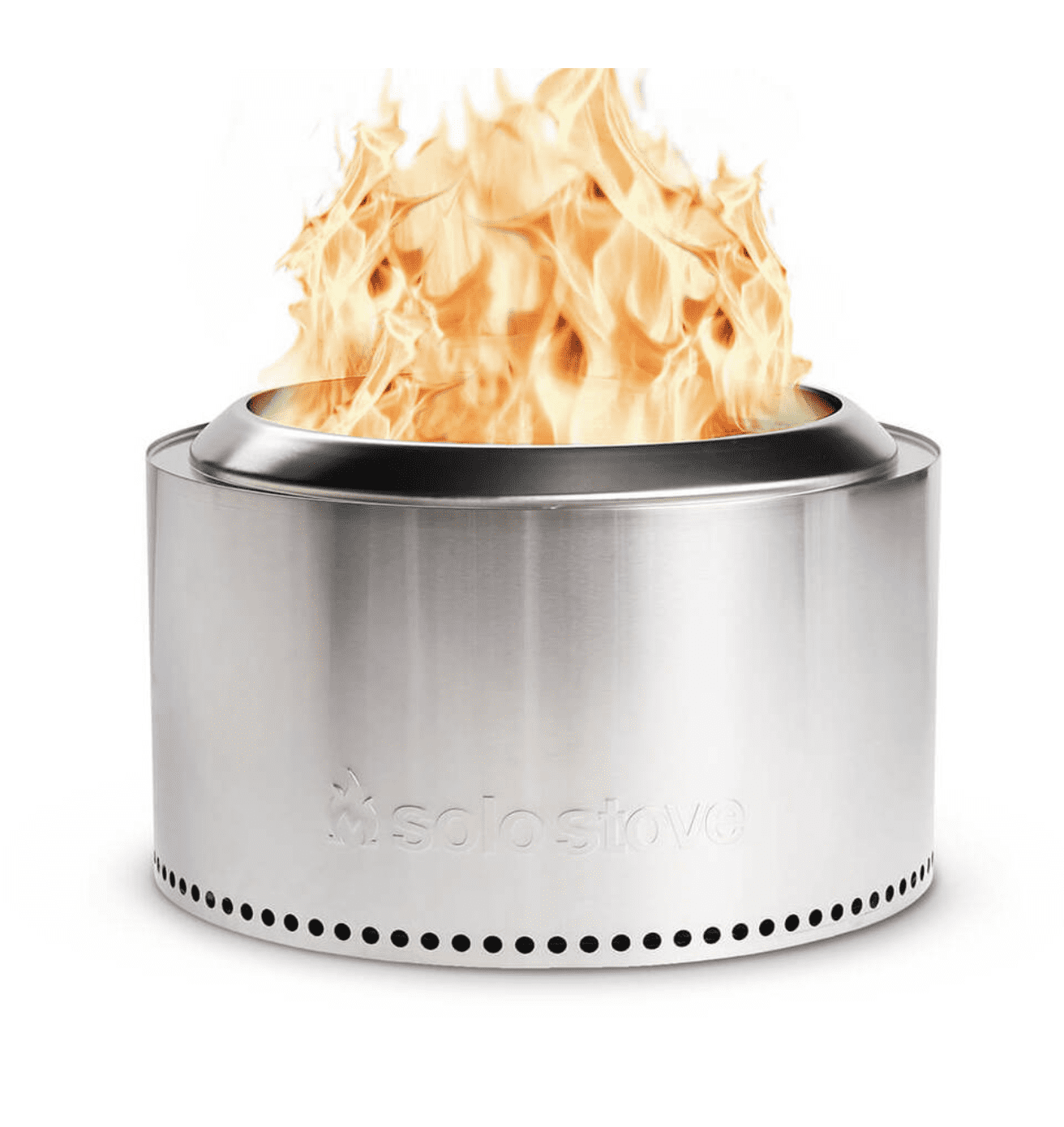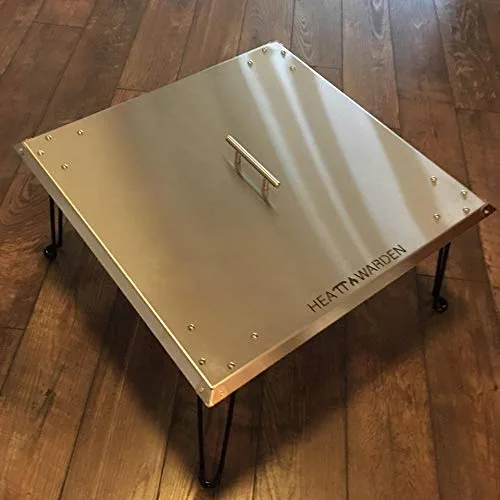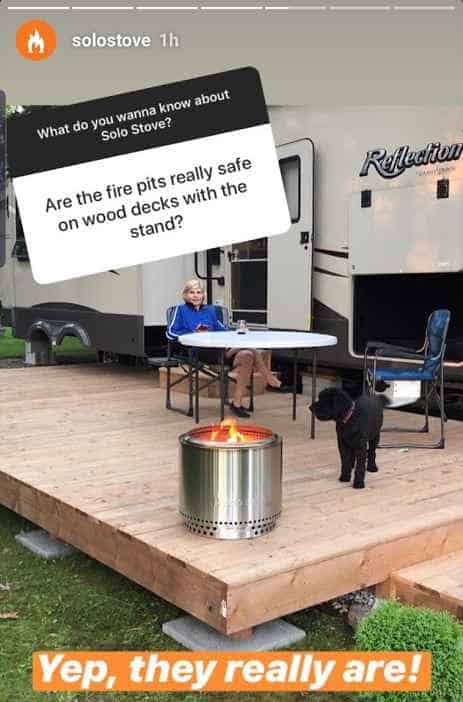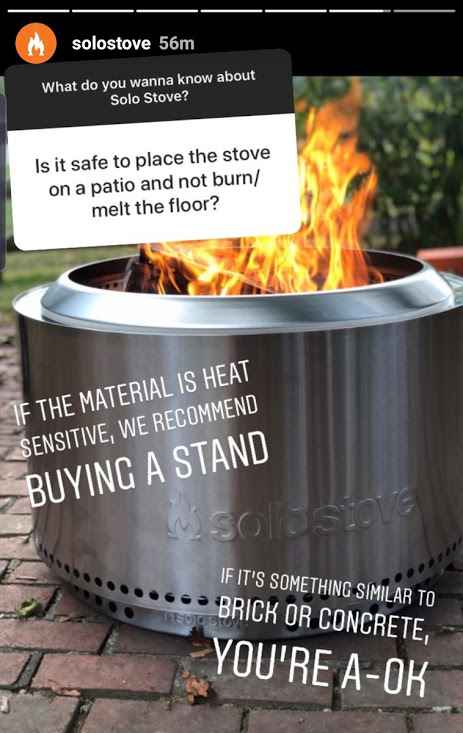If you’ve read our full Solo Stove review, you know Solo Stove offers 3 main smokeless fire pit sizes–a small, medium, and large size.
Is the Bonfire big enough?
Will the Yukon be too much?
1. Solo Stove Bonfire

Fire pit built for the backyard and beyond. Easily light up smokeless fires anywhere life takes you.
2. Solo Stove Yukon

The biggest and baddest smokeless fire pit. The fire pit was created for community. Make memories for years to come with the fire pit built to last.
Regardless of the size you choose, both fire pits are made from the same 304 stainless steel material. The design is nearly identical with the exception of the obvious size difference. Performance and your willingness to spend more or less money is where these factors really start to matter. Let’s take a closer look.
Physical Differences
| Wood Type | 20″ Bonfire | 27″ Yukon |
|---|---|---|
| Height w/o stand |
14 in / 35.6 cm |
16 in / 40.6 cm |
|
Height w/ stand |
16.75 in / 42.5 cm |
18.75 in / 47.6 cm |
|
Weight |
20 lbs / 9.1kgs |
38 lbs / 17.2kg |
|
Diameter |
19.5 in / 49.5 cm |
27 in / 68.6 cm |
Solo Stove Bonfire vs Yukon – What Matters?
Wood Consumption
There is a significant difference in the consumption of firewood between these two fire pits. On average, you will use 22% more firewood per hour with the Yukon.
What Were the Test Procedures?
In our tests, we started fires in both the Bonfire and Yukon and allowed them to burn until they had roughly equal coal beds. We created two stacks of firewood, each weighing 88lbs and 88.4lbs for the Bonfire and Yukon respectively. With each stack, we made sure to remove as much bark as possible.
Then we fed the fires from each stack of wood until there was an adequate fire. We continued to feed the fire to maintain this level for two hours and tracked how much wood we used. At about two hours in, the Yukon burned through its entire stack of wood. We weighed the remaining wood that had not been burned for the Bonfire’s stack.
The data was tabulated and according to the numbers, the Yukon burned 19.3lbs more wood per hour than the Bonfire. If you have one fire a week for 4 hours for 4 months out of the year, you’ll need approximately 2,800 lbs of wood to fuel the Yukon, vs. 1,235lbs for the Bonfire.
A face cord of wood weighs about 1,200 lbs.
Assuming a face cord costs around $100-$150, that’s what the cost will work out to be for the Bonfire. To fuel the Yukon for the same time frame, you’ll be better off purchasing a full cord at that point (1 full cord = 3 face cords), which will cost around $300 for most hardwoods.

Here are both the Bonfire and Yukon Solo Stoves with a bed of coals built prior to starting the test. Of course, this will vary greatly based on the wood you use, how big you like to keep your fire, and a number of other factors. But this at least gives you a frame of reference for how much more the Yukon uses.
CAUTION
This was far from a perfect test and there was a lot of noise in the numbers. Your own individual experience will likely vary greatly. Check out some of the notes at the end of this article so you know other factors that should be considered if you decide to perform this experiment yourself.
Tolerance Stack
When designing a product the term ‘tolerance stack’ refers to the accumulation of variances across materials and parts. Typically, the bigger a product is, the greater the variation in materials. This can result in more defective products where a certain specification is ‘out-of-tolerance’.
This concept applies to the Bonfire and Yukon too. With the smaller Bonfire, you are likely to run into fewer issues over time than with the Yukon. This may be one of the reasons Solo Stove decreased the size of the Yukon from 30” in diameter to 27” in 2020.
When we used the 30” Yukon there was an issue with the upper ring severely warping after several uses. Our experience wasn’t anything out of the ordinary as several other owners have reported the same thing on forums and social media groups.
Where this is significant is with the elevated grate that the logs sit on. Several years ago Solo Stove had issues with the grate failing. Since then, they have re-designed the grate. We have not had any issues with the Solo Stoves we have been testing.
The point is with the smaller Bonfire, you’re less likely to run into issues. These smokeless fire pits reach very high temperatures and as a result, the steel moves. Over time, this causes wear on the welds and materials where a failure can result.
Fire pit built for the backyard and beyond. Easily light up smokeless fires anywhere life takes you.
Heat Output
If you think the Yukon will put out more heat because it’s bigger, then you’re correct, as long as you have enough wood to feed it. However, one of the many complaints of the Solo Stove and other fire pits is they don’t radiate enough heat.
While it’s our opinion that these complaints do not have any ground, that doesn’t resolve the issue. Nowhere do any of these fire pits advertise that they will radiate heat outward and not up – and why would they? Basic science tells us heat rises up, not out.
We recommend the USA-Made Heat Warden Heat Deflector

However, to fix this, you will need something that can push the heat out toward you and your family, rather than up and away. A radiator shield or simply a piece of metal that can withstand the heat will do. Technically, yes the Yukon will produce more heat, but it’s only effective if you help radiate the heat outward.
The Heat Warden brand is the only made in America heat deflector with American stainless steel and foldable, custom-made steel legs.
Log Size
Standard 16” split logs will fit into both of these fire pits, however, smaller logs are typically better for the Bonfire. This is due to the height you have to work with on the Bonfire. As you build a base of coals in the smaller Bonfire it becomes more difficult to position a log below the upper rim of the fire pit, which is necessary for a clean, smokeless burn.

In both the Bonfire and Ranger, fitting a full 16″ split log and getting a smokeless burn can be a challenge. If the logs do not sit below the holes at the top of either fire pit, you’re very likely to see more smoke produced from that log.
Portability
You can move both of these, but in regard to portability, the Bonfire is the clear winner. The Yukon is difficult to move with only one person because of its size and shape. The Bonfire comes with a well-made canvas bag that makes it easy to carry. You could easily fit this in the trunk of a modern sedan and it won’t take up significant space in a truck, SUV, or RV.
Bottom Line
Bottom line is if you don’t mind spending a little bit more on wood and don’t plan on moving your fire pit, the Yukon is the winner. The Yukon produces a large fire that’ll keep the entire family warm, especially after adding a shield or something else that can help push the heat outwards instead of up.
The biggest and baddest smokeless fire pit. The fire pit was created for community. Make memories for years to come with the fire pit built to last.
If you want to be more economical with your firewood budget or like the idea of taking the Solo Stove on the road with you, the Bonfire is best for you. It’s small enough to fit into a car, yet produces a big enough fire to keep groups of 4 to 6 warm.


Test Notes
Wood
• Moisture content
• Weight of bark relative to the individual stacks
• Girth of logs (all were standard 16” in length)
Fire Size
“Adequate fire” is up to interpretation. For the purpose of this test, it means keeping the fire as large as possible without wood sticking above the rim.
For many people, once the bed of coals is established, you’ll find you can use significantly less wood to get a comfortable heat output.
Wood Cost
Costs will fluctuate depending on the type of wood, moisture content, area, current demand, and a myriad of other factors. Wood weight is only a rough estimate that was found on Utah State University’s Forestry website.
Again, the wood weight will vary depending on the moisture content.
Solo Stove Bonfire vs Yukon: FAQs
Question: How do you clean your Solo Stove Bonfire or Yukon?
Answer: While some prefer to use a shopvac to clean the ash, the easiest way is to dump the Solo Stove upside down on the grass or other soft outdoor surface.
First, make sure there are no coals or embers still burning and the fire pit is cool. Then flip the Solo Stove upside down. You can then put it on its side and roll it from side to side to help remove any other ash through the air holes near the bottom of the fire pit.
Question: How to put out a Solo Stove Bonfire or Yukon
Answer: The best way to extinguish a fire in your Solo Stove Bonfire or Yukon is to let it die out on its own. Pouring water on the hot metal could cause the metal and fire pit to warp unpredictably and speed up the formation of rust.
Smothering the fire is not a good option either. Since there are air holes on the bottom, air will still be flowing to the fire. Instead of burning hot and fast, it will smolder and take longer to die out.
If you need to put the fire out fast, make sure you have a metal bucket nearby. Then use an ash shovel or set of fire tongs to move the embers or wood to the bucket of water where it can be extinguished. Be sure to move the metal bucket of water as close to the fire pit as possible.
Question: Can you put a Solo Stove on a deck?
Answer: Yes you can! Although to do it safely it’s is recommended to purchase the stand and then place some concrete pavers between the Solo Stove and your deck.
While Solo Stove’s social media team has said you can place it straight on your deck, we have found the bottom of the Solo Stove can still become hot enough where it could pose a hazard to your deck’s integrity.
For a test like this, there is only so much ‘science’ that goes into it. Instead, this test should be taken as a ballpark estimate for what you might experience with your own fire pit. It’s really meant to provide an estimate of wood usage for new users so they may budget accordingly.






